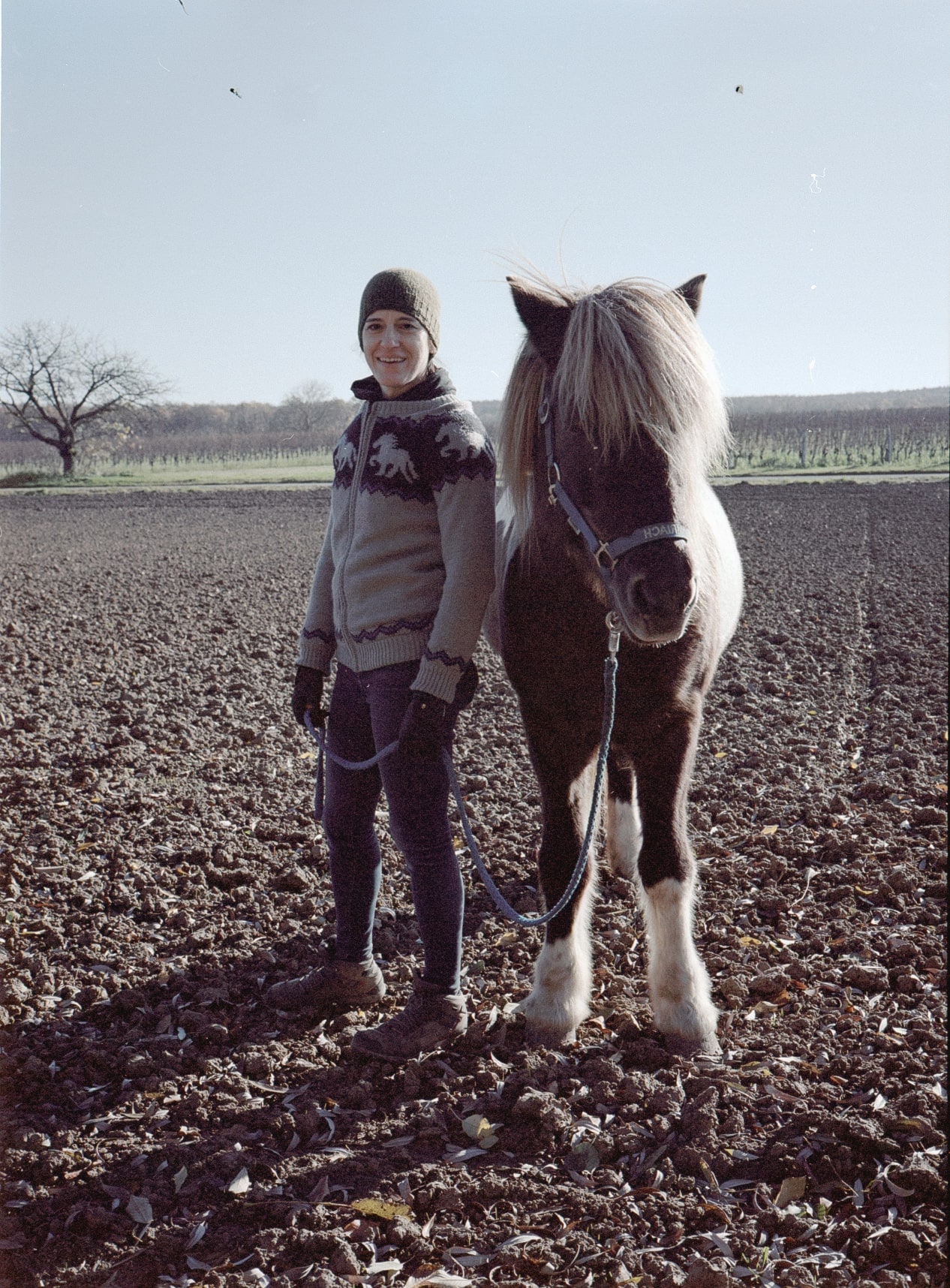Brett - a (nasty?) yeast
Written by Franz Weninger on the 16th of March 2021I first stumbled across “Brett” in 1992. Not because it was the first time that I was smelling it in a wine but because an oenologist was standing in our cellar in Burgenland and gave this smell of horse sweat its name for the first time. Today this incident always reminds me a little of “The Emperor's New Clothes”.

Petra & Bláhvít (her horse)
I believe that by the 1990s, Brett had become more and more of a problem for winemakers because they wanted to please Robert Parker. Under the influence of international oenologists such as Parker, wineries around the world began using new wooden barrels. And the wine from these barrels didn't smell of Brett. For more and more people, Brett was becoming such a problem that it was even considered a wine fault. In fact, I'll go so far as to say that in the past, Brett used to be part and parcel of every serious red wine. In some wines - especially those from Bordeaux and the Rhone Valley - it was very noticeable, whereas in others it constituted only a minor element in a complex aromatic profile. But it was there.
Parker turned Brett into the much-discussed "wine fault" of the time – not unlike the “mousey” notes described in natural wines today.
I observed the same phenomenon a few years later in Villány, a region in Southern Hungary where we also used to work. Brett had always been a significant part of the flavour profile there. The winemakers even called their region the "Bordeaux of the East", and by 1997 a large number of their wines had a nice proportion of Brett. However, international oenologists also arrived here and the witch hunt against Brett took its course. Filtration, the increased use of sulphur, the addition of acid before fermentation all became common methods. This resulted in flat, thin and also very commercial wines, something which I personally find boring. I was shocked. It just couldn't be the right way to make wine. From today's perspective, I would say that in most of the cases where modern oenology hit a region between 1990 and 2006, the wines did not get better, they got worse.
I must say though that after that day in 1992, my father and I started fighting Brett too. If we thought we detected the slightest hint of iodine in a wine, we racked it and added sulphur. Looking back, the wines no longer showed Brett after this treatment, but they never matured into really great wines. They were alright, but nothing more. Despite this fact, we pursued our fight against Brett, because there was still a long way to go before we reconsidered our strategies.
Back then, we submitted every wine we suspected of being tainted with Brett to be analysed in the laboratory. One day I brought a “Brett candidate” there and met the laboratory manager. He said he could tell me immediately whether the wine had Brett - he opened the bottle, tasted it and replied: “No, it doesn't have Brett.” When I asked if he didn't want to analyse the wine - after all, we were standing in a wine laboratory - he said there was no point. He explained that some wines contain only very few Brettanomyces cells, but their taste is very pronounced, while other wines can have a high Brett count, without anybody noticing. Therefore, it is the sensorial tasting that counts.
Laboratory analysis leads us to believe there is assurance, but there is no such thing as one hundred percent assurance. Once you accept that, you become less dependent on analyses for your work.
In 2007 I began to reconsider the use of sulphur in my wines - see also here: FAQs. Again, with lower sulphur, Brett became a riskier element in my wines.
So, I had to find another strategy to deal with it. First, I had to learn to accept that Brett is part of a spontaneous fermentation and unfiltered wines, as it was for 7 960 of the 8 000 years of wine culture. In any spontaneously fermented wine, Brettanomyces will be part of the fermentation biome. This happens more in some vineyards than in others. I realised, for example, that Brett produces a rather strong, earthy aroma from deep, moist soils and that the health of the grapes seems to play an important role. On the other hand, wines from slate soils are great in this regard, as the Brett is always perceived as interesting and enriching.
I came to the conclusion that Brett could add diversity to the flavour profile of a wine. Here I would like to quote Jamie Goode:
Brett is such an interesting topic. It´s a fault, yet it´s an accepted element of some fine wines, particularly those with age. It´s a superb example of why we should take a more nuanced view of wine faults, rather than binary “fault or no fault” view.
Jamie Goode: Flawless - Understanding Faults in Wine
We can learn from sour beers (lambics) that Brett can also contribute fruity aromas, such as strawberry. I noticed that this usually takes place during the first fermentation, when the yeast can still find good nutrition and good conditions. Brett from the second or third fermentation phase (in old barrels - no more sugar available) usually becomes too strong.
Since we only work with old barrels ourselves, I started using ozone water for washing. This way, we are able to work with the biome of the grapes and the vineyard, and not the biome of our barrels.
I would like to recommend Jamie Goode's book to anyone interested in the subject: Flawless - Understanding Faults in Wine. A great read!